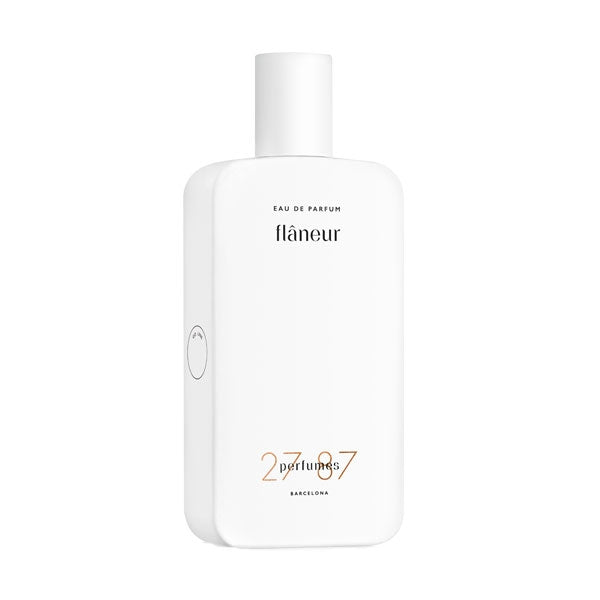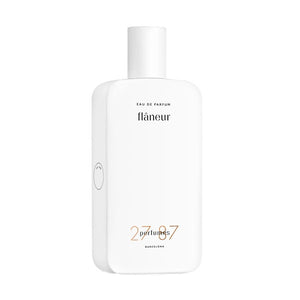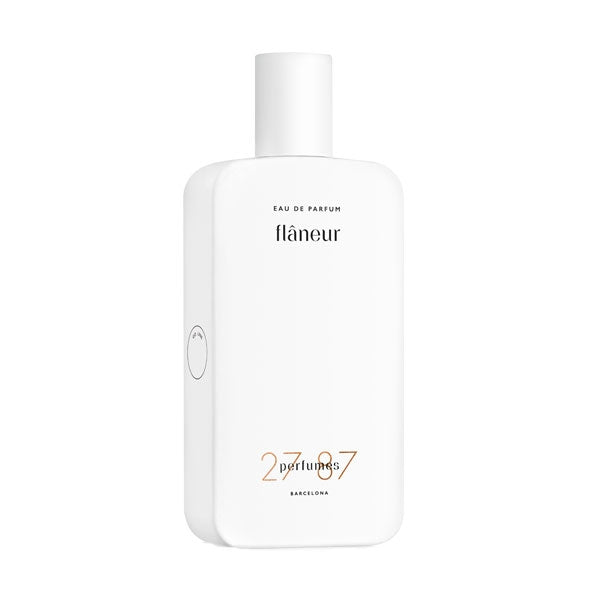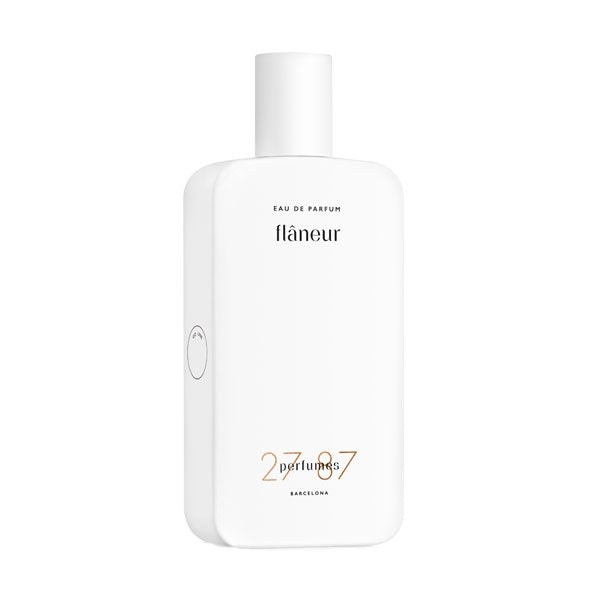flâneur celebrates a lost world of ideas: we find the extraordinary in the ordinary, in the seemingly unspectacular. In a world characterized by speed and sensations, founder Romy invites us to discover a world beyond superlatives and ambitions and to seek inspiration in the grace of everyday life.
Imagine wandering around aimlessly and discovering the beauty of everyday life. With this image in mind, Romy wanted to create a modern and visionary fragrance in keeping with the current zeitgeist, with a touch of melancholy. A green and latently bitter absinthe note contrasts with the warmth of cashmere wood, lime blossom, and almond blossom. Combined with fresh bergamot and elegant cedarwood on a base of star anise, dry ambergris and vetiver, this results in a romantic and subtle fragrance that celebrates both a sense of down-to-earth and the exoticism of everyday moments.
The traditional flaneur
The flâneur is a traditional concept of the wealthy French bourgeoisie and generally refers to a figure who wanders (flâne) through the streets and passages of anonymous cities. Often depicted in contemporary literature and graphic art as a man in a tailcoat with a top hat, walking stick, and pipe, the flâneur strolls through the neighborhood, drifting and going with the flow. His gift is observation and intellectual reflection on even the smallest things and events. He observes the world in general and the life around him in particular. If we transfer this view of things to the present day, we realize that the flâneur of 27 87 represents much more than a single person, but rather offers a unique view of the world by opening himself sensitively to everyday life and thus perceiving details and spaces that were thought to be lost with his trained eye and capturing them with all his senses.
Absinthe
Open-minded even to the exotic in Barcelona, Romy discovered a seemingly unspectacular bar in the Raval district while strolling around. When she entered, a new and authentic facet of her city revealed itself to her. She not only found Barcelona's oldest bar, but also an absinthe bar frequented by the who's who of the 20th-century art world. Unchanged since 1820, this bar has welcomed world-famous artists such as Ernest Hemingway, Salvador Dalí, and Pablo Picasso, who came here to find inspiration. Absinthe is known as the artists' favorite drink and, due to its high thujone content, was not only classified as harmful to health in the last century but also banned almost everywhere in the world. Spain is one of the few countries where absinthe can still be enjoyed today, and the bar Romy discovered in Barcelona is the oldest absinthe bar in the world. As a tribute, she therefore placed this unusual fragrance at the heart of flâneur.




